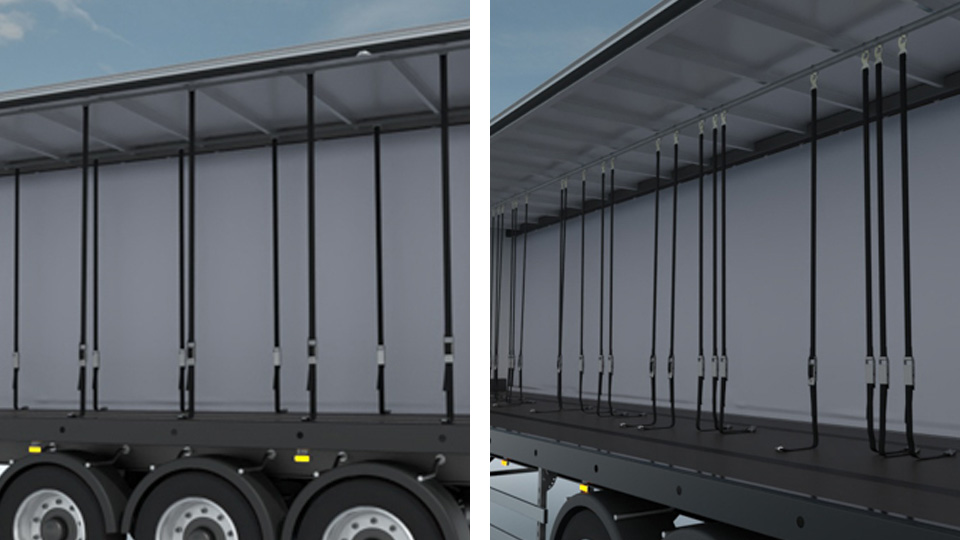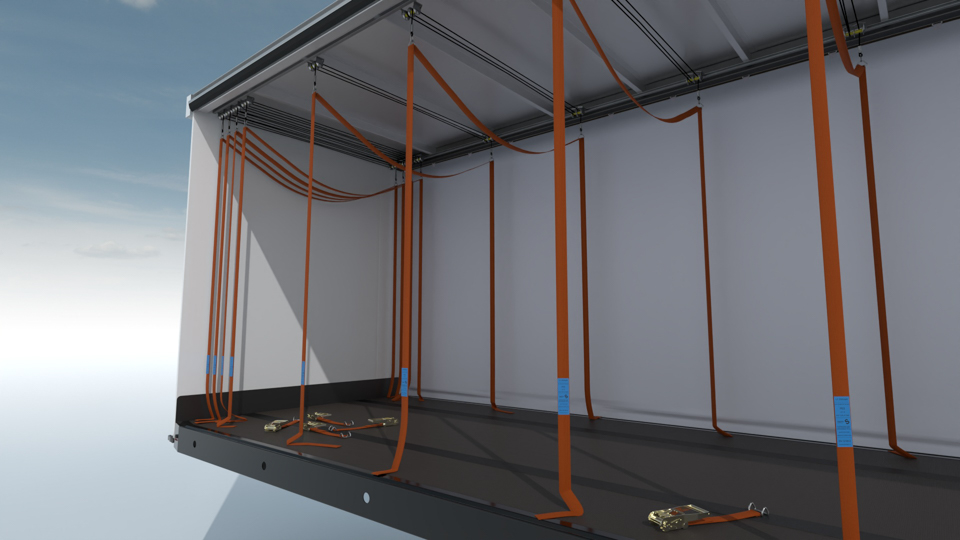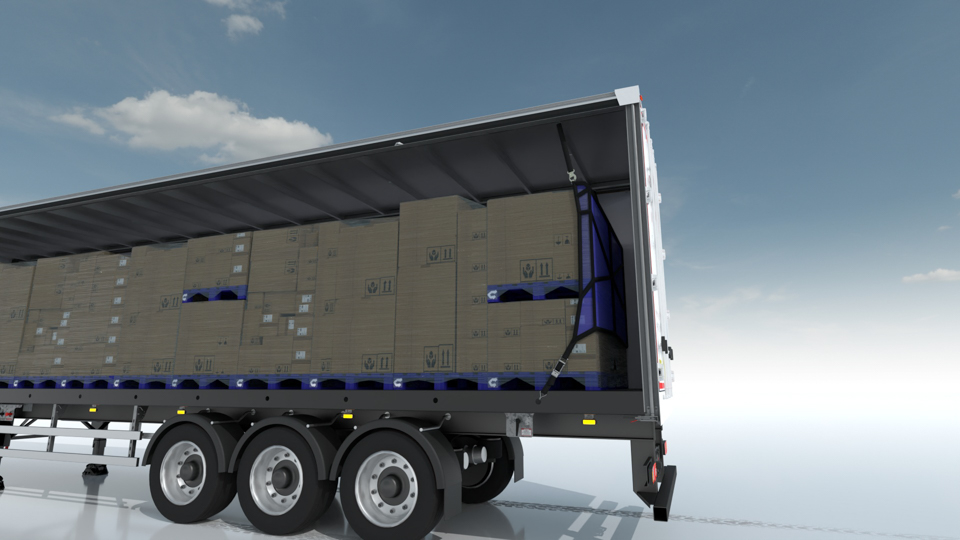Driver Vehicle Standards Agency

The equipment and methods in this section are listed in alphabetical order.
Side raves
A side rave is the steel edging of a vehicle chassis.
You can use side raves to attach securing equipment to the vehicle.
Check that the raves are compatible with the type of securing equipment youre using.
Visually check the raves regularly for signs of:
- damage
- distortion
- corrosion
Arrange for the raves to be repaired as soon as possible if you notice any damage.
The raves may not be strong enough to use if theyre in poor condition.
Anchorage points
Check that:
- the anchorage points are compatible with the type of securing equipment youre using
- theres as little movement as possible in the anchorage point - restraints will not work as well if the anchorage point can move
- there are no signs of damage or distortion

Sheeting hooks
You should only use sheeting hooks to tie a sheet over the load to:
- cover loose loads
- protect the load from the weather
You must not use sheeting hooks or rope hooks as an anchor for straps or chains, even if theyre attached to side raves. Theyre not designed for load securing.

You can use buckle straps (hanging black straps) and internal nets on roof rails to contain loads on standard curtainsiders.

The individual load items or stacks being secured must weigh less than 400kg. You must not use buckle straps and internal nets to secure items or stacks weighing 400kg or over.
If the load does not fill the load bed, you should either:
- secure the last row using a ratchet strap, with the load blocked to fill the gap
- use buckle straps or an internal net to form a rear bulkhead
You can use buckle straps and internal nets as a secondary securing method in case the main securing method fails. Theyre generally not as strong as other securing methods and may not be suitable for all loads.
You can use bungee securing systems and kites to secure fragile or crushable loads that might be damaged by webbing straps.
Bungee securing systems
Bungee securing systems consist of ratchet straps, nets, or sheets that are:
- held into the roof of the vehicle or trailer
- brought down over the load
- secured in the same way as a normal ratchet strap
The straps should be manufactured to BS EN 12195-2.
Although the system might be held into the roof when its not in use, its strength does not rely on the roof structure.

Kites
You can suspend kites vertically to reduce the effect of gaps in a load. This will stop the load moving up and down the length of the vehicle or trailer.
When deciding whether to use kites you should make sure theyre strong enough for the forces likely to be exerted on them.

Chains are usually much stronger than webbing ratchet straps and less vulnerable to damage.
You should:
- check the condition of the chains before using them and visually inspect them for damage on a regular basis
- store chains in a compartment or a box with a lid when theyre not being used - this protects them from environmental damage and stops them sliding or bouncing off the load bed
When you use chains to secure heavy equipment like engineering plant and machinery, you must:
Related Articles
Comments
Write a Comment
Ministerial Departmental News
- PM's Office, 10 Downing Street
- Cabinet Office
- Department for Business, Innovation and Skills
- Department for Communities and Local Government
- Department for Culture, Media and Sport
- Department for Education
- Department for Environment, Food and Rural Affairs
- Department for International Development
- Department for Transport
- Department for Work and Pensions
- Department of Energy and Climate Change
- Department of Health
- Foreign and Commonwealth Office
- HM Treasury
- Home Office
- Ministry of Defence
- Ministry of Justice
- Northern Ireland Office
- Scotland Office
- Wales Office
- See all departments
